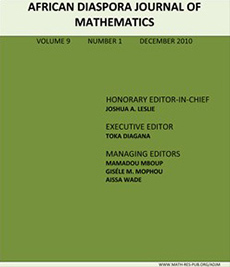Abstract
In this paper we prove the interior approximate controllability of the following Semilinear Heat Equation $$ \left\{ \begin{array}{lr} z_{t}(t,x) = \Delta z(t,x) + 1_{\omega}u(t,x)+f(t,z,u(t,x)) & \mbox{in} \quad (0, \tau] \times \Omega,\\ z = 0, & \quad \mbox{on} \quad (0, \tau) \times \partial \Omega, \\ z(0,x) = z_{0}(x), & x \in\Omega, \end{array} \right. $$ where $\Omega$ is a bounded domain in $\mathbb{R}^{N}(N\geq1)$, $z_0 \in L^{2}(\Omega)$, $\omega$ is an open nonempty subset of $\Omega$, $1_{\omega}$ denotes the characteristic function of the set $\omega$,the distributed control $u$ belong to $\in L^{2}([0,\tau]; L^{2}(\Omega;))$ and the nonlinear function $f:[0, \tau] \times \mathbb{R} \times \mathbb{R} \rightarrow \mathbb{R}$ is smooth enough and there are $a,b, c \in \mathbb{R}$, with $c \neq -1$, such that $$ \sup_{(t,z,u) \in Q_{\tau}} |f(t,z,u) -az-cu-b | < \infty, $$ where $Q_{\tau}= [0, \tau] \times \mathbb{R} \times \mathbb{R}$. Under this condition we prove the following statement: For all open nonempty subset $\omega$ of $\Omega$ the system is approximately controllable on $[0, \tau]$. Moreover, we could exhibit a sequence of controls steering the nonlinear system (1.1) from an initial state $z_0$ to an $\epsilon$ neighborhood of the final state $z_1$ at time $\tau \gt 0$, which is very important from a practical and numerical point of view.
Citation
H. Leiva. N. Merentes. J. L. Sanchez. "Interior Controllability of the $nD$ Semilinear Heat Equation." Afr. Diaspora J. Math. (N.S.) 12 (2) 1 - 12, 2011.
Information





